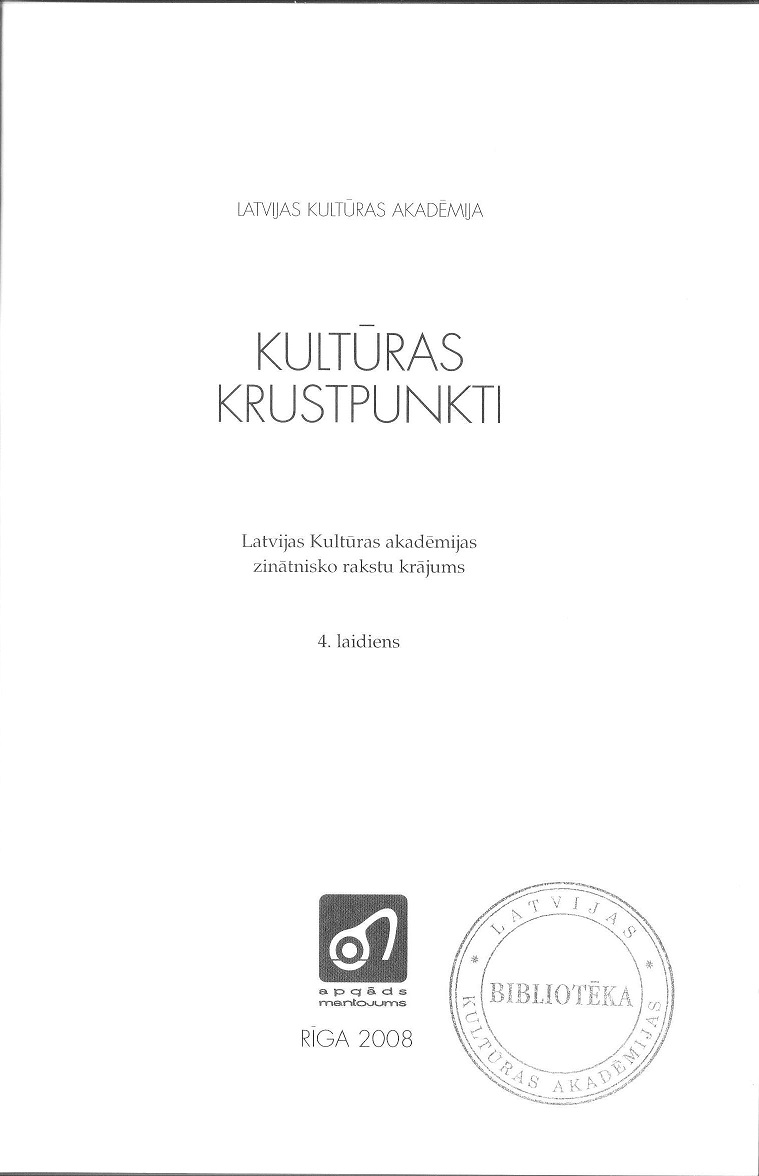Albums Terra Mariana -baltiešu dāvana Romas pāvestam 1888. g.: starpdisciplinārs skatījums
The Album "Terra Mariana" – a Gift of the Balts to the Pope in 1888 -an Interdisciplinary View
Author(s): Henrihs SomsSubject(s): Christian Theology and Religion, Social history, 19th Century, Sociology of Religion, History of Religion
Published by: Latvijas Kultūras akadēmija
Keywords: Terra Mariana; gift to Pope; 1888; Baltic people; album; Christianity in Latvia and Estonia;
Summary/Abstract: The nobility of the Baltics prepared a gift for Pope Leon XIII on the 50th anniversary of his priesthood in 1888 - the magnificent album. "Terra Mariana". It presaged about the dissemination of Christianity in Latvia and Estonia, formerly Livonia, which was also named the Land of Maria (Terra Mariana). Signs of interdisciplinarity are clearly marked in idea of "Terra Mariana" -to give an original gift to an honorable man. Today this intention can be classified as an interdisciplinary project per se and can be described as an innovation; a certain aim to acquire a necessary product; a restriction in time, finances, materials and human resources; the specific organization of project. In these aspects, the creation of "Terra Mariana" is innovative and there are few analogues in the historical sources of Latvia. The authors had an aim which was clearly defined - to create a unique present for the Pope. The initiator of the gift was the painter and philanthropist Maria Przezdziecka (1823-1890) from the Tisenhausen family. The album was written and edited by the researcher of local history, Gustav Manteifel. Time to prepare the album was very restricted. The celebration of the 50th anniversary of the priesthood of Pope Leon XIII began as early as January, 1888. The album was delivered to Rome with a delay, only in 1889. Its creation was hindered by a scarcity of finances. Research was conducted on the restricted and compact location (Livonia in 13-16th centuries, Inflantia or Latgale in 17-19th centuries), which was an objective precondition for the inclusion of diverse sciences. The findings of various sciences and their sub-sciences were relevant in scholarship of this album - history (cultural history, historiography), history-related sciences (numismatics, sphragistics, historical genealogy, heraldry, historical geography), theology and the science of religion (the history of religion and the linguistics (comparative linguistics, German linguistics, Romanic), architecture (the architecture of buildings and landscapes) and iko philosophy. Research into restricted areas usually make relevant the question of use of Mimes. The researcher deliberately introduces monuments of history and iill lire (social life, architecture, ethnography, language, nature etc.) into scientific discourse, which otherwise might not seem unique or valuable in In study of global phenomena or large-scale areas.
Journal: Culture Crossroads
- Issue Year: 4/2008
- Issue No: 1
- Page Range: 125-135
- Page Count: 11
- Language: Latvian

